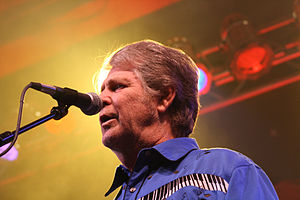Piano Sheets > Brian Wilson Sheet Music > Wouldn't It Be Nice (ver. 1) Piano Sheet
Wouldn't It Be Nice (ver. 1) by Brian Wilson - Piano Sheets and Free Sheet Music

About the Song
"Wouldn't It Be Nice" is the opening track on the 1966 album Pet Sounds and one of the most widely recognized songs by the American pop group The Beach Boys. It was composed and produced by Brian Wilson, with lyrics by Tony Asher and Brian Wilson, and the lead vocal was sung by Brian Wilson with Mike Love singing lead vocals on the bridge.
The layering of harmonies upon harmonies, and lyrics on top of harmonies make this one of the quintessential Beach Boys songs. In the Endless Harmony documentary, Brian Wilson described the song as "what children everywhere go through… wouldn't it be nice if we were older, or could run away and get married".
Wilson was quoted as saying:
Listen for the rockin' accordions and the ethereal guitars in the introduction. Tony and I had visualized a scene. We had a feeling in our hearts, like a vibration. We put it into music, and it found its way onto.
Download this sheet!
About the Artist

Random article
Piano notes and music reading No language is easy to learn except for our mother tongue. Mother tongue is a language which we start learning as soon as we are conceived. But learning some other language can be difficult if you are really not into it. Piano Notes are written in a completely different language. Agreed that the characters in the piano notes are very artistic and beautiful but they are equally strange to beginners and newcomers. But here is one interesting fact. Learning music reading from a piano notes music sheet is not a very difficult task. Actually it is much easier than learning a foreign Asian language like Chinese. Memorization and repetition are the two main ingredients for success in mastering the language of piano notes. So realistically speaking, once you are done reading the basics, all you have to do is practice the language as much as you can. To say in a very classical tone, practice till each and every note starts running through your veins. (More...)
